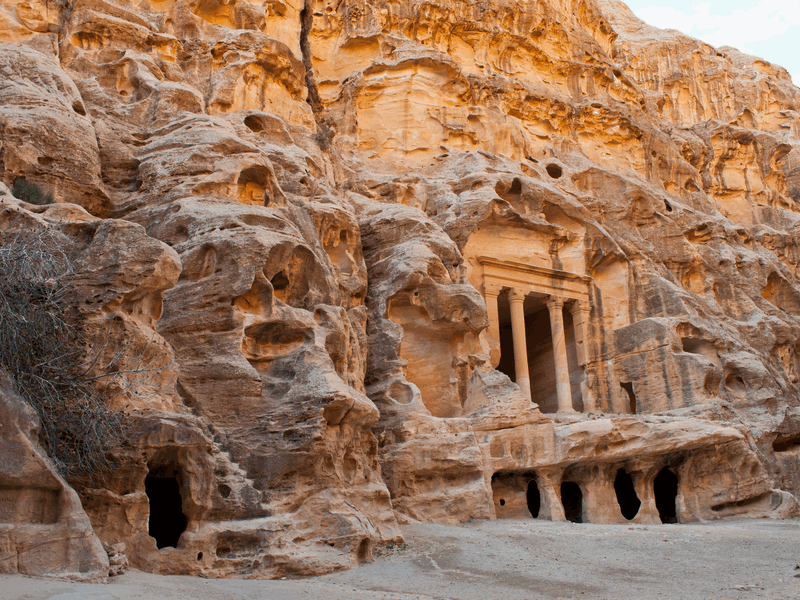
Jordan rich cultural history is shown
through the ancient civilization of the Nabataeans. From the 4th century BCE to the 1st century CE, the Nabataeans built an amazing civilization, centered around their capital city, Petra. Even today, Petra continues to impress visitorspetra. In this article, we will take a journey through the history of the Nabataeans in Jordan, to see how they rose, what they achieved, and what they left behind for future generations.
The Nabataeans Origins and Early Settlements
The Nabataeans were a group of nomadic Arab people, but where they came from exactly is still a mystery. They first started living in the northwestern part of the Arabian Peninsula, in the area we now call Jordan. Thanks to their skill in trade and the smart locations they chose to live in, they grew rich quickly. This success pushed them to make Petra their capital, and they turned it into a busy city along the trade routes that connected Arabia, Egypt, and Syria.
Petra The Rose City
At the center of Nabataean life was the amazing city of Petra. The Nabataeans carved the city into pink sandstone cliffs, giving it its nickname, the Rose City. The buildings in Petra show just how skilled the Nabataean engineers were. In this part of the article, we will explore some of Petra’s most famous buildings, like the Treasury (Al-Khazneh), the Monastery (Ad-Deir), and the Great Temple. These structures show the Nabataeans’ talent for mixing their local styles with Greek and Roman designs.
Trade and Economic Power
The Nabataeans became very rich because they controlled many trade routes. They were in charge of the Incense Route, which moved expensive goods like spices, incense, and luxury items from Arabia to the Mediterranean. They made a lot of money as the middlemen, connecting the East with the West. In this section, we will see how important trade was to the Nabataeans and how they built their economic power by trading between different regions.
Art, Religion, and Culture
The Nabataeans didn’t just build great buildings and become rich through trade; they also made important contributions to art and culture. In this part, we will see their artistic work, like rock carvings, paintings, pottery, and jewelry. These things help us understand their daily life and what they believed in. We will also talk about their religion, focusing on gods like Dushara and al-Uzza, to learn more about their spiritual beliefs.
The Decline and Legacy
Like many ancient civilizations, the Nabataeans eventually became part of a bigger empire. The Romans took control of Nabataea in 106 CE, which was a turning point in their history. However, the culture and buildings of the Nabataeans remained. In this section, we will talk about why the Nabataeans declined and how their civilization still affects Jordan’s culture today. We will also see how Petra became a UNESCO World Heritage site, showing that the Nabataeans’ legacy lives on.
The amazing achievements of the Nabataeans and their stunning buildings in Petra continue to inspire people around the world. By learning about their history, we get a better understanding of the culture that shaped Jordan’s past. The Nabataeans’ legacy is a reminder of how people can create something that lasts forever. Their history and their beautiful city, Petra, continue to capture the imagination of those who visit this ancient wonder.








